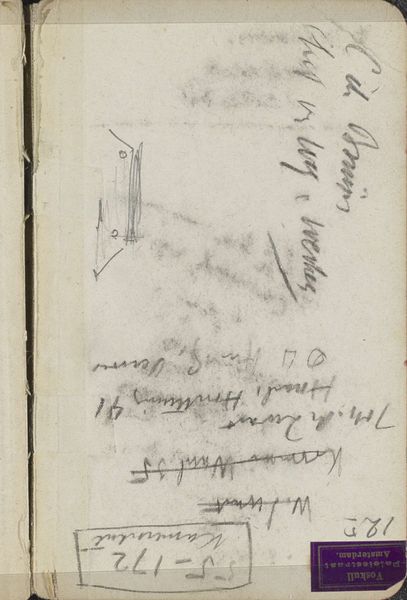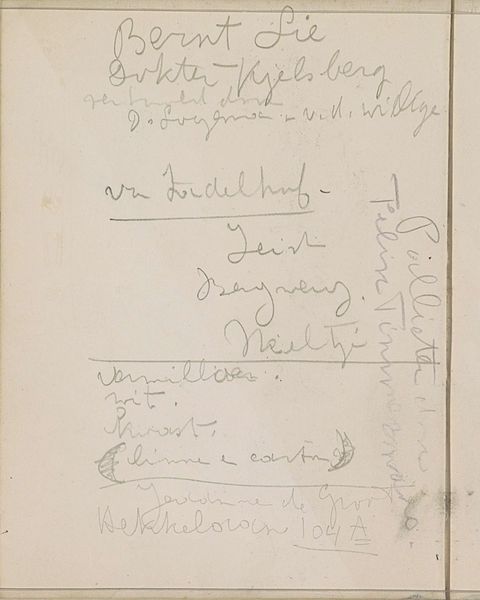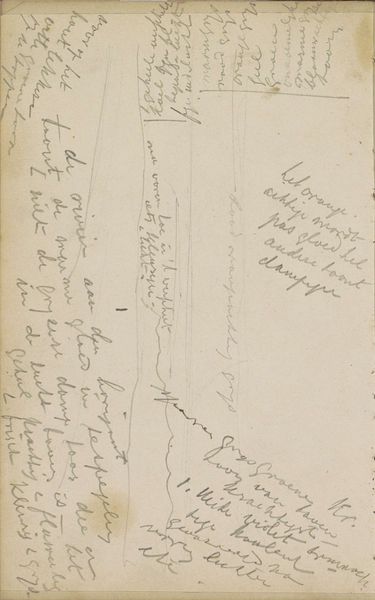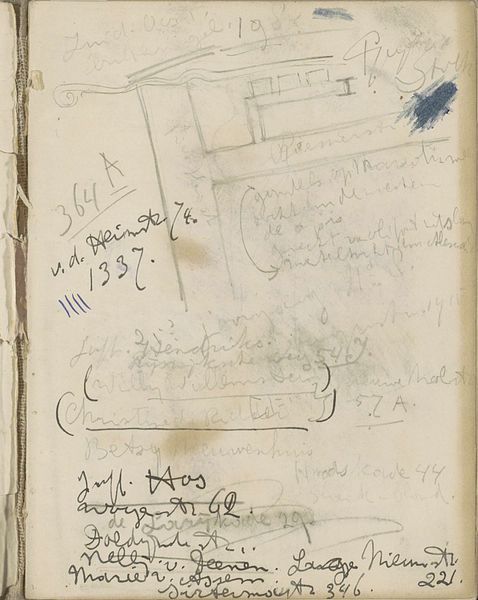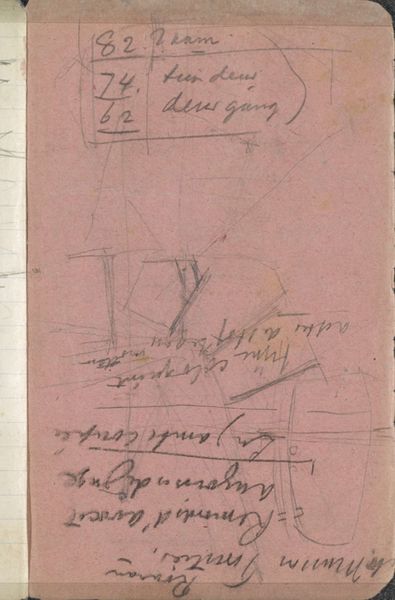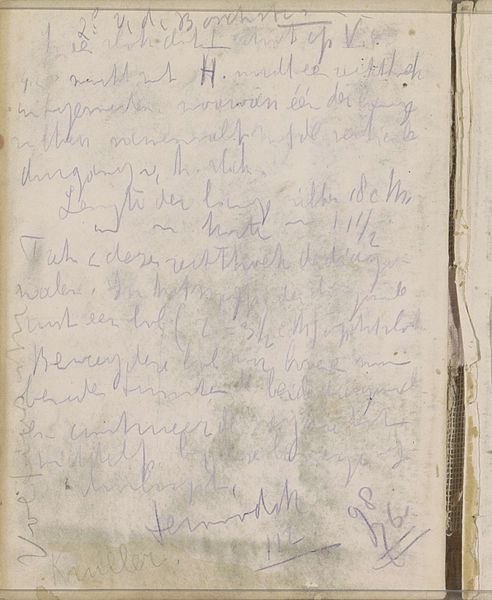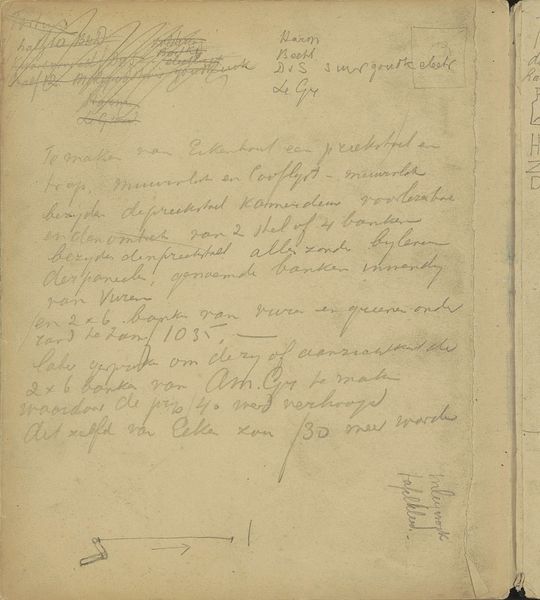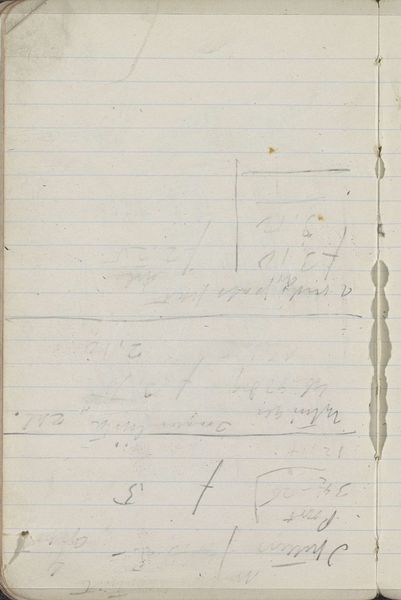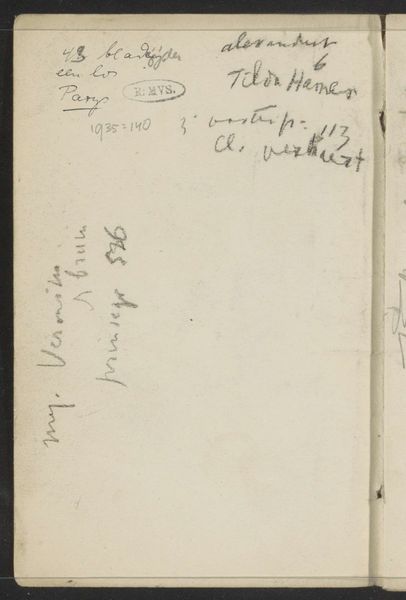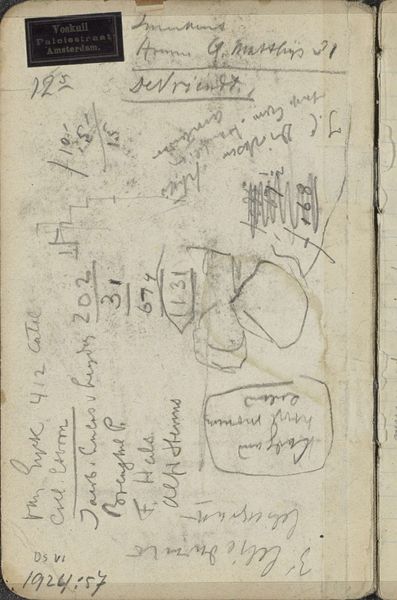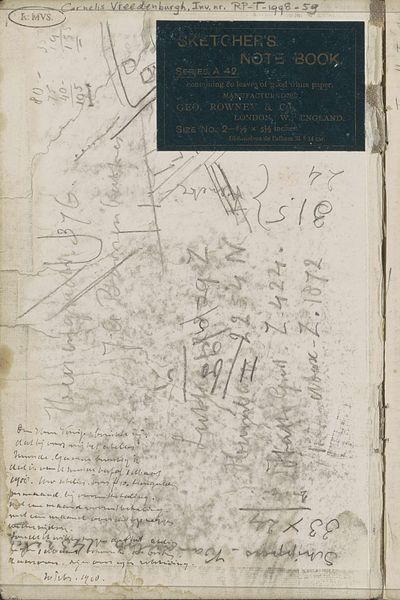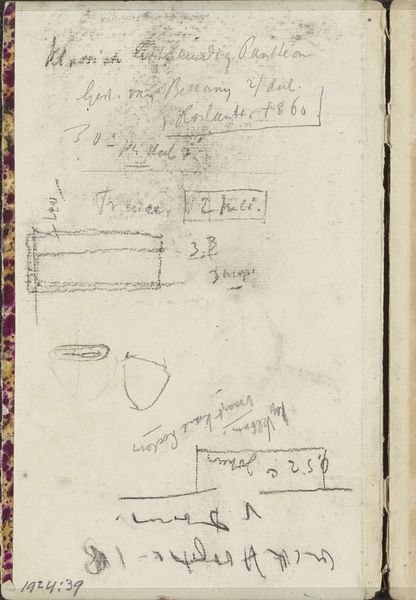
drawing, pencil
drawing
hand written
hand-lettering
sketch book
hand drawn type
hand lettering
constructivism
personal sketchbook
hand-written
sketchwork
geometric
pencil
abstraction
sketchbook drawing
sketchbook art
Copyright: Rijks Museum: Open Domain
Curator: Here at the Rijksmuseum, we have a drawing entitled "Rechthoek en een driehoek," dating back to approximately 1916. It is done with pencil. What are your initial thoughts on it? Editor: Well, it looks like a page from a notebook—sort of an intimate glimpse into someone’s thought process. There's a real rawness and immediacy about the geometrical shapes juxtaposed with what appears to be loose script. Curator: That is accurate. The geometrical forms and handwriting certainly highlight the confluence of personal and external influences shaping this artwork. Editor: Right. I find myself drawn to the relationships between these lines and forms. The crisp, decisive geometry interacts intriguingly with the messier, organic lines of the text. Note the tension arising from the precise angles of the shapes set against the free-flowing script— almost like two distinct voices vying for prominence on the same plane. Curator: That tension speaks to the broader constructivist movement which attempted to marry art with industrial design and functional objects during a revolutionary time when artists were rethinking art's role in society. Art needed to contribute directly to shaping modern life, as they believed. Editor: Precisely, the shapes themselves possess an elemental, almost archetypal quality. They appear fundamental, primal; a sort of visual alphabet for understanding the world’s structure and organization. The overlapping angles, the implied spaces between lines… it’s a fascinating breakdown of form into its essential components. Curator: Beyond the formal aspects, consider the socio-political upheaval that shaped the work. Artists believed art could be a tool for social transformation during this historical moment of revolution and innovation. This sketchbook hints at how avant-garde ideas percolated into daily creative output. Editor: I agree; I see both art for art's sake as well as functionality—making me pause to really consider this convergence. Ultimately, the apparent simplicity of "Rechthoek en een driehoek" belies its profound conceptual underpinnings and formal complexity. Curator: Agreed; examining this piece today enriches our grasp on both the artistic techniques used and also the art of the past!
Comments
No comments
Be the first to comment and join the conversation on the ultimate creative platform.
